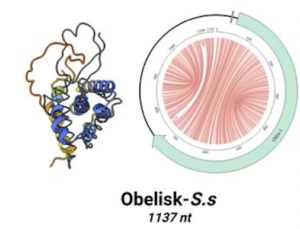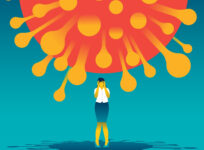People over age 80 now make up the fastest growing segment of the US population, and they are going to reshape everything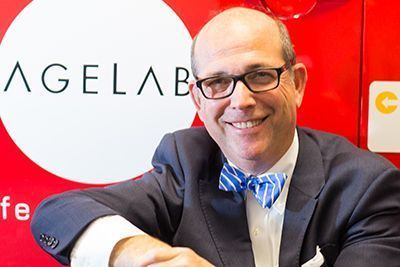 about healthcare, according to Joseph Coughlin, Director of the Massachusetts Institute of Technology’s AgeLab.
about healthcare, according to Joseph Coughlin, Director of the Massachusetts Institute of Technology’s AgeLab.
Today’s octogenarians are very different from elders of past generations. They possess technologies that were little more than science fiction when they were kids. Many of them expect to be active and functional at levels that would have seemed utterly unrealistic several decades ago. They’re often managing complex chronic conditions with an equally complex mix of medications.
Speaking at a conference sponsored by the Population Health Consortium last year, Coughlin pointed out that while death remains one of the few non-negotiable aspects of life, for a growing number of people it is increasingly deferrable.
Today’s healthcare clinics must be able to serve five distinct age brackets with very different needs. It is not uncommon these days for primary care clinicians to treat people ranging in age from 20 to 100 in the course of a working week.
Keep the Reaper Waiting
“We’re simply not dying at the same rates as we used to,” a fact not lost on the funeral home industry, which has been lamenting its declining revenues over the last decade. Coughlin added that three percent of the US workforce is still from the WWII-era “Greatest Generation” era.
Barring another major war, or a worldwide climate cataclysm, the longevity trend is likely to continue. *Half the kids born in rich countries today will likely live 100 years. What does age bracketing look like on a 100-year lifespan?”
But as we stretch the life-curve, as a society we’re filling in those added years with a lot of chronic disease. Many elders may be quite hale and hearty into their 8th and 9th decades, but others are not. “Morbidity is high these days, though mortality is not,” said Coughlin, who is author of a new book entitled, The Longevity Economy, which explores the new realities of aging in a high-tech globalized world .
Old models of medicine will not withstand the pressures of these demographic shifts, or the extremely disruptive impact of information technology.
Complex chronic diseases like obesity, diabetes, depression, autoimmune disorders, and cancer are widespread among elders. Unfortunately conditions also show rising incidence among younger adults.
Coughlin believes that old models of medicine will not withstand the pressures of these demographic shifts, or the extremely disruptive impact of information technology.
Practitioners of the future, he says, are going to have to get a lot more patient-centric and tech-friendly than they have been in the past.
Marcus Welby’s Dead
“New technology–somewhere between cool and creepy–will enable us to engage patients across various aspects of their lives. Technology can blow away your business model. So can demographics,” Coughlin warned the practitioners and healthcare administrators gathered for the conference.
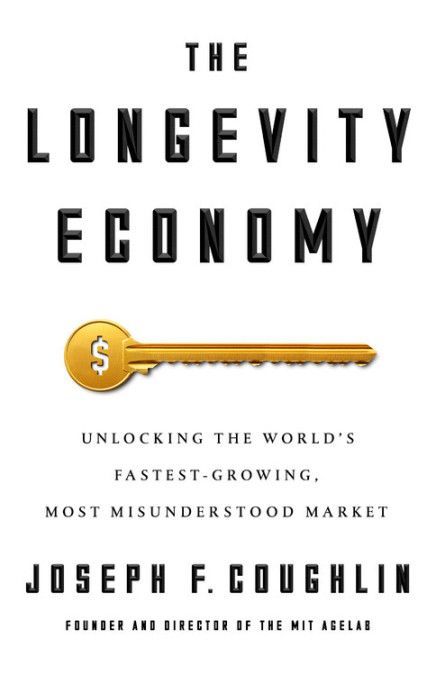 Too much of today’s healthcare delivery is still predicated on a paternalistic “provider-consumer” model in which doctors, nurses, and other professionals “do” the care, and patients are passive recipients. This does not square with the new reality in which people –including elders—are self-empowered, self-motivated, and self-managing.
Too much of today’s healthcare delivery is still predicated on a paternalistic “provider-consumer” model in which doctors, nurses, and other professionals “do” the care, and patients are passive recipients. This does not square with the new reality in which people –including elders—are self-empowered, self-motivated, and self-managing.
“Marcus Welby is dead,” says Coughlin. “The next level of primary care physician is going to be a systems integrator, someone who can coordinate all the data. It will be a whole new profession we have yet to train.”
The medical establishment has been slow to engage with the empowered patient movement. Silicon Valley has not. There are thousands of websites, smartphone apps, wearable monitors, self-directed diagnostic tests, and “smart” devices appealing to elders with an underlying message that, “You may be older, or dealing with a chronic condition, but you don’t need to be ‘sick’.”
Companies like Amazon may be having as much impact on the day-to-day wellbeing of the nation’s elderly as any health insurer or medical clinic.
Aging in the Age of Alexa
Consider Alexa, Amazon’s highly sophisticated artificial intelligence system masquerading as a personal assistant. The cylindrical device responds to voice commands, and is always ready to order (and deliver) groceries, listen and respond to your needs, keep track of your appointments, look up information online, entertain you, and help you stay connected to family and friends.
Alexa is certainly not yet a fixture in every home. But as of May 2017, some 10 million Americans had embraced the system. Many are in their sixth, seventh and even eighth decades of life.
As Elizabeth O’Brien pointed out in a MarketWatch article in 2016, “Alexa wasn’t designed for older adults, and experts say that might be part of its appeal with that demographic. The device avoids the bland aesthetic that has traditionally characterized assistive devices, which turns off consumers who don’t self-identify as old — that is, pretty much everyone.”
Coughlin believes smart mobile devices have the potential to upend healthcare in much the same way as they have reshaped 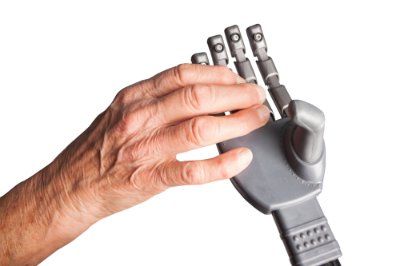 the world of retail.
the world of retail.
We’ve entered an era where:
- People can continuously monitor dozens if not hundreds of biometric parameters using their wristwatches.
- Humanoid household robots like SoftBank’s Pepper are making their way out of the corporate sector and into peoples’ living rooms. It’s already happening in Japan.
- Smart utensils like the HAPIfork monitor how much and how fast people are eating, and smart fridges like Samsung’s Family Hub know exactly what everyone’s eating.
- A “Wize Mirror” enabled with advanced optical scanners and gas sensors can read faces, detect signs of cardiovascular disease, and offer guidance on preventive measures.
- A new generation of cars could soon come equipped with a sophisticated array of body sensors like ECG monitors in the driver’s seat, and Bluetooth-enabled glucose monitors in the dashboard.
- High-tech toilets can chemically analyze a user’s…ahem…”downloads” for a wide range of biomarkers (These have been available in Japan for at least a decade).
- Online patient-directed forums such as Patients Like Me are enabling people with serious medical conditions to connect, trade practical advice, rate treatment options, and self-organize support groups.
These are just a few of the many emerging technologies that could radically impact the lives of elders and the ways in which they interact with medical practitioners.
“The number one trusted face in America is Google,” says Coughlin. “On average, people have 3 doctor visits per year, but spend 52 hours online searching health info. People are crowd-sourcing medical info, just like they do for contractors, lawyers, and restaurants. Professional standards still mean something but not what they used to mean. People will go to a doctor or pharmacist, but then do their own homework before they fill a prescription or take a specific treatment.”
The presumption that this phenomenon belongs strictly to the young is erroneous. Once they get comfortable using computers, tablets, and smartphones, elders are just as voracious for medical information as younger people, sometimes more so.
People working in the healthcare field need to adapt, and they need to do it fast, Coughlin warned.
“The whole language of our field is obsolete. Healthcare people continue to talk about “populations” and “communities” but patients are going for individualized care. If you use population language and expect to engage someone who wants personalized 23andMe details you’re not going to win.”
END


